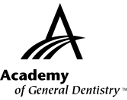|
Exercise No. 376
Subject Code: 154
Sports Dentistry & Mouthguards
The 15 questions for this exercise are based on the article, Effect of clenching with a mouthguard on head acceleration during heading of a soccer ball, on pages 41-46. This exercise was developed by Jean J. Carlson, DDS, FAGD, in association with the General Dentistry Self-Instruction committee.
|
Reading the article and successfully completing this exercise will enable you to:
- understand the nature of concussion injuries in soccer athletes;
- recognize the relationship between the activity of various muscle groups and head stability; and
- understand the importance of clenching on a mouthguard (MG) to prevent injuries resulting from soccer ball heading.
|

